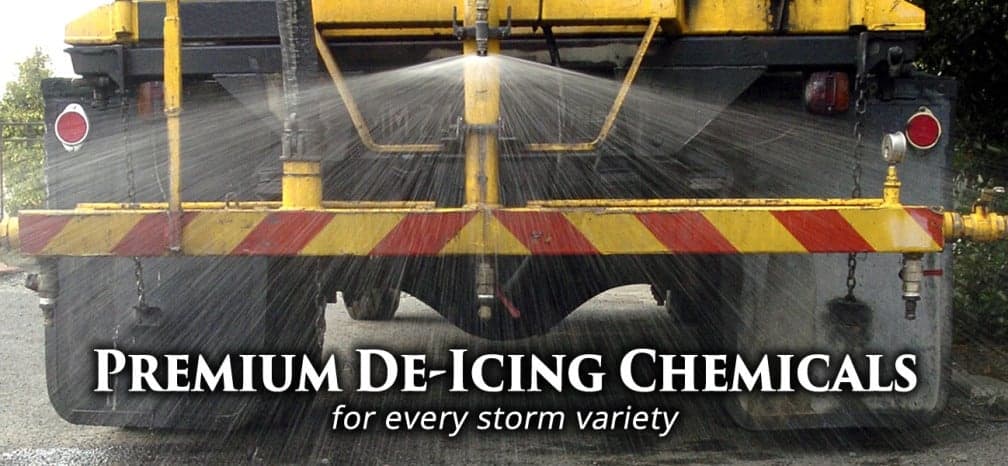Are liquid deicers environmentally friendly? That is a great question and the answer is “yes and no.” That’s a helpful answer, right? So here is the scoop, liquid deicers are friendlier than bulk dry salt in the right application, especially anti-icing applications. Let us break it down for you.
Liquid Deicers Are the Same Chemicals As Bulk Spread Materials
You use the same primary chemicals in liquid solutions as you would use in a dry spreader. Since you are using the same materials, you are not using a more environmentally friendly material. Generally, the liquid deicers are a salt-water solution that is 30% salt with the majority of salt coming from plain old rock salt (which is the same as table salt, only in bigger pieces).
Two other chemicals (salts) commonly used in liquid deicers and liquid anti-icers are magnesium chloride and calcium chloride. These are generally more environmentally friendly and work in colder temperatures, but are cost prohibitive to use in every case.
If you are using the same material, why would it be more environmentally friendly? Great question and the answer is…
Liquid Deicers use less Material.
Liquid deicers generally use less pounds of salt per square foot of pavement than bulk salt applications. It normally takes 2 pounds of salt in a brine solution where you would need 3 pounds of salt when spread dry.
Using less is especially true when we talk about anti-icing applications (when you put material down BEFORE the ice or snow comes). A proper application of anti-ice brine keeps the ice from forming or snow from sticking to the pavement and today’s tools allow for pinpoint accuracy of solution application. With a dry application, you have to put more down to make sure the salt is spread evenly around, and it just takes more dry salt to ensure you have adequate coverage over your entire target area.
Liquid Deicers Aren’t Always a Good Fit
Liquid Deicers work well for anti-icing or against a thin to moderate ice accumulation on your pavement. You can also use liquid deicers as a pavement pre-treatment before a snow fall. On the other hand, it will not cut through over an inch of snow or through heavy ice very well.
In order to get the benefits of both rock and liquid deicers, some equipment will mix the brine solution with the dry salt while the salt is being spread to get the best of both worlds, but if you spread brine where it won’t do the job, you are just wasting the material and wasting material is NOT environmentally friendly.
It’s Still Salt
While there is a lot less material used, it is still salt, which is not a problem in small quantities, but in excess quantities, it hurts roads and the environment. There is currently no perfect deicer but using 1/3 less with a brine solution while still keeping people safe is a good start. Using a brine solution is a good idea because not only do we protect the environment, we can also save a significant amount of money by the significant reduction in salt use.

